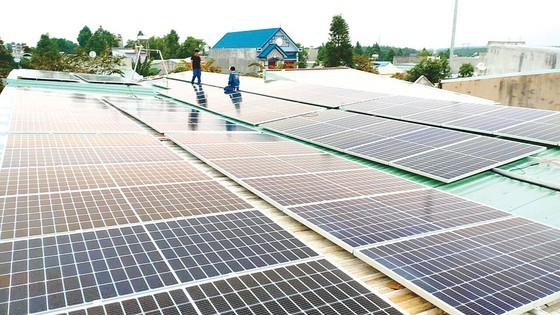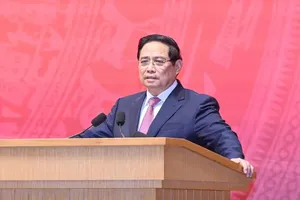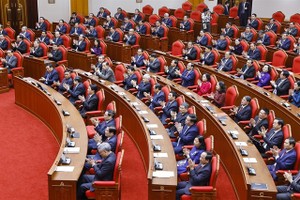 |
Accordingly, by 2050, the proportion of renewable energy in Vietnam will have accounted for 67.5-71.5 percent. Particularly, greenhouse gas emission from power plants in 2030 and 2050 will reduce to 204-254 million tonnes and 27-31 million tonnes, respectively.
By 2030, haft of office buildings and households in Vietnam will have used self-sufficient solar energy. There will be inter-regional renewable energy industrial and service centers in all three regions of the country. Even better, Vietnam aims at developing surplus renewable energy amounts for exporting purposes (of 5,000-10,000 MW in 2030).
At present, many EU clients of domestic companies are asking for reports on carbon emission during the manufacturing process, and do not accept merchandise from producers that cannot satisfy green requirements. Therefore, Vietnamese companies will be excluded from the supply chain if they do not use green energy.
That is the reason why Electricity Planning 8 is warmly welcomed by a large number of enterprises. In the short term, this planning can address inadequacies related to renewable energy, especially among wind and solar energy projects.
However, to effectively implement this planning, the Industry and Trade Ministry must closely monitor the development of this green energy to avoid insensible growth. In addition, a measure to combine traditional and renewable energy kinds must be devised. The toughest challenge in adopting the planning is to ensure Vietnam’s commitment with the world about green energy operation as well as national energy security, particularly energy cost adjustment to suit the affordability of citizens and attract more investors.
Therefore, the Industry and Trade Ministry must cooperate with related ministries, agencies, and local authorities to urgently complete the draft amended Electricity Law and Renewable Energy Law in order to present to the National Assembly in 2024. Simultaneously, these state units must work with investors to review all commitments and regulations, agreements to address current issues in existing renewable energy projects. Any problems beyond their power should be reported to the Prime Minister for further direction.
The last point to consider is the high capital demand for Electricity Planning 8 (of US$134.7 billion in the 2021-2030 period, and then $400-523 billion in the next 20 years). Thus, the State must encourage all economic sectors to pour resources into this field in a healthily competitive manner. The power price must follow the market mechanism model to ensure a balanced benefit between investors / power businesses and power consumers.
























